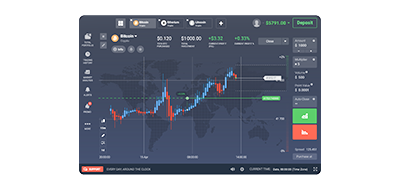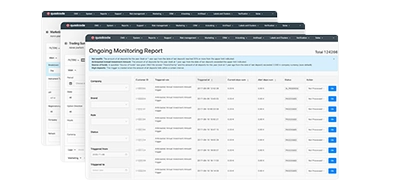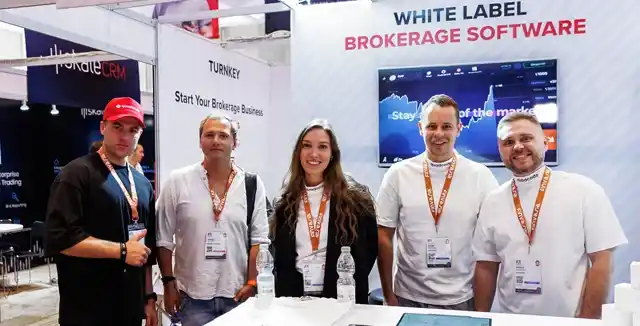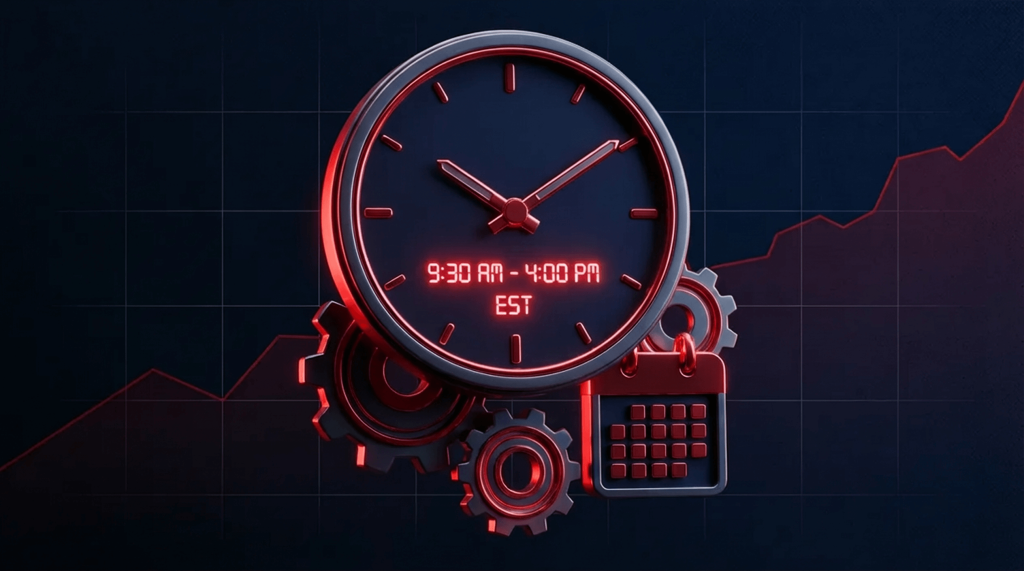Quay lại
Contents
Lệnh Điền hoặc Giết (FOK) là gì – Định nghĩa, Ví dụ, Cách thức hoạt động


Iva Kalatozishvili
Business Development Manager

Demetris Makrides
Senior Business Development Manager
Lệnh FOK (Fill or Kill) là một loại lệnh có điều kiện mà bạn có thể đặt với nhà môi giới khi giao dịch chứng khoán như cổ phiếu. Với lệnh FOK, toàn bộ giao dịch phải được thực hiện ngay lập tức theo các thông số kỹ thuật bạn đã nêu, chẳng hạn như giá và khối lượng, nếu không lệnh sẽ bị "hủy" hoặc tự động hủy. Điều này đảm bảo toàn bộ giao dịch của bạn được thực hiện như mong muốn hoặc không có giao dịch nào diễn ra.
Định nghĩa của Lệnh Điền hoặc Giết
Lệnh FOK (Fill or Kill) cung cấp cho nhà giao dịch một bộ điều kiện được xác định trước nghiêm ngặt, phải được đáp ứng đầy đủ để giao dịch được hoàn tất. Với lệnh FOK, bạn phác thảo chính xác các chi tiết giao dịch ngay từ đầu, bao gồm tài sản giao dịch mong muốn, số lượng giao dịch và mức giá tối đa có thể chấp nhận được.
Loại lệnh này nhằm mục đích khớp lệnh ngay lập tức theo cấu trúc giao dịch bạn đề xuất, nếu không sẽ không có giao dịch nào xảy ra. Đặc điểm nổi bật của FOK là lệnh "tất cả hoặc không có gì". Nếu thị trường không thể khớp lệnh tức thời toàn bộ khối lượng lệnh cùng lúc ở mức giá giới hạn bạn đặt hoặc cao hơn, giao dịch sẽ bị hủy hoặc "hủy" thay vì được khớp một phần.
Không có sự linh hoạt nào được áp dụng cho việc chỉ hoàn tất một phần giao dịch - giao dịch sẽ được thực hiện liền mạch theo bộ lọc được xác định trước hoặc được rút lại nhanh chóng. Điều kiện khác biệt này phân biệt FOK với các loại lệnh khác có thể được thực hiện một phần trước khi để lại các phần không khớp lệnh còn trống trên sổ lệnh.
Bằng cách xác định trước cấu trúc giao dịch lý tưởng và yêu cầu tuân thủ các bộ lọc này để hoàn tất, FOK giúp các nhà giao dịch áp dụng một phương pháp tiếp cận kỷ luật và rõ ràng. Việc chắc chắn hoàn tất tối đa ngay lập tức hoặc hủy bỏ nhanh chóng mang lại sự rõ ràng, tránh tình trạng lấp đầy một phần có thể ảnh hưởng đến vị thế dự định.
Lệnh Điền hoặc Giết hoạt động như thế nào
Khi chuẩn bị lệnh FOK, bạn sẽ xác định các thông số kỹ thuật giao dịch trực tiếp với nhà môi giới của mình. Điều này bao gồm việc chỉ định tài sản giao dịch, thiết lập giá tối đa thông qua giới hạn và xác định số lượng chính xác dự kiến thực hiện.
Với thông tin chi tiết trong tay, nhà môi giới của bạn sẽ ngay lập tức chuyển FOK điện tử đến sàn giao dịch tương ứng. Tại đây, thông tin lệnh được hiển thị trên thanh khoản thị trường trực tiếp có trong cơ sở dữ liệu sổ lệnh. Sau đó, máy tính của sàn giao dịch sẽ làm việc chăm chỉ để tìm kiếm bất kỳ lệnh đối ứng hoặc cụm lệnh nào phù hợp đáp ứng các điều kiện được xác định trước.
Nếu số lượng chính xác được yêu cầu có thể được đáp ứng ngay lập tức ở mức giá giới hạn hoặc cao hơn, giao dịch sẽ được hoàn tất liền mạch theo thời gian thực. Tuy nhiên, nếu việc khớp lệnh không thể thực hiện ngay lập tức do thanh khoản trong sổ lệnh không đầy đủ, chương trình FOK sẽ tự động hủy toàn bộ giao dịch được đề xuất.
Không giống như các loại lệnh thay thế như lệnh ngày hoặc lệnh có hiệu lực đến khi hủy, vốn tồn tại vô thời hạn cho đến khi hoàn tất hoặc được rút lại thủ công, FOK có giao thức hết hạn cho phép chấm dứt các lệnh chưa được khớp trong vòng vài giây. Điều này đặt lại đề xuất giao dịch và ngăn lệnh bị trì hoãn do thanh khoản chưa được xử lý.
Hãy cân nhắc việc triển khai một lệnh FOK giả định để mua 50.000 cổ phiếu với hạn mức 10 đô la. Khi nhận được lệnh này, nhà môi giới của bạn sẽ ngay lập tức chuyển lệnh đến các sàn giao dịch. Nếu 35.000 cổ phiếu có sẵn ở mức 10 đô la hoặc thấp hơn, chênh lệch sẽ hủy toàn bộ giao dịch thay vì chỉ khớp một phần. Việc thực hiện nghiêm ngặt này đảm bảo các nhu cầu được xác định trước của bạn được đáp ứng đầy đủ hoặc không.
Các điều kiện biến động như biến động giá hoặc chênh lệch thanh khoản bất ngờ cũng có thể dẫn đến việc hủy lệnh do không thể đáp ứng chính xác các thông số kỹ thuật. Việc hết hạn nhanh chóng đảm bảo giải quyết kết quả, tránh các rủi ro không xác định vốn có của các lệnh chưa được thực hiện.
You may also like
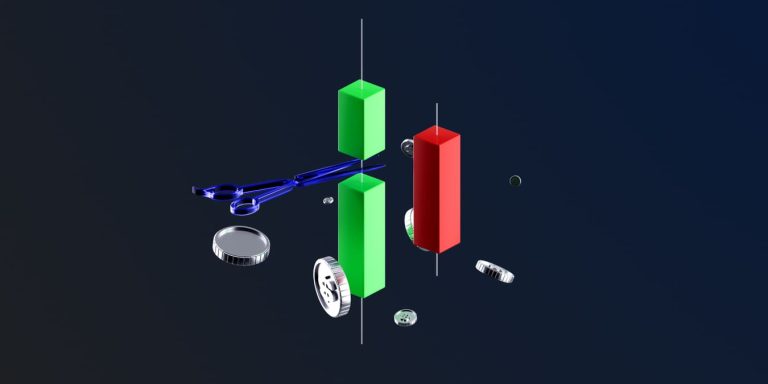
Lệnh Fill hoặc Kill có hiệu lực trong bao lâu?
Khi sử dụng tính chất điều kiện nghiêm ngặt của lệnh FOK, điều quan trọng là phải hiểu rõ tuổi thọ ngắn hạn của chúng trên thị trường. Không giống như các loại lệnh thay thế có thể tồn tại trên sàn giao dịch trong thời gian dài, lệnh FOK có thời hạn hết hạn được lập trình sẵn, được thiết kế tỉ mỉ để phù hợp với tốc độ giao dịch hiện đại.
Do nhu cầu xác nhận tức thời các bộ lọc được xác định trước khi lệnh được đặt, hầu hết các sàn giao dịch đều giới hạn thời gian lệnh FOK đến không được xử lý trước khi kích hoạt hủy tự động. Mặc dù khung thời gian có thể khác nhau đôi chút giữa các sàn giao dịch và tùy thuộc vào tài sản, lệnh thường bị hủy trong vòng vài giây nếu thanh khoản khớp lệnh không được đáp ứng ngay lập tức.
Tuổi thọ ngắn ngủi này phù hợp về mặt chiến lược với các điều kiện hiện hành của thị trường thanh khoản đương đại. Với những cải tiến công nghệ đang nhanh chóng phân phối lại dòng lệnh trên toàn cầu với tốc độ chỉ bằng một phần giây, sự chậm trễ trong thời gian ngắn có thể tạo ra những biến động giá đủ để phá vỡ các thông số giao dịch đã được hiệu chỉnh trước. Việc FOK chưa được lấp đầy trong thời gian ngắn giúp bảo toàn cấu trúc dự định của nhà giao dịch trước những kết quả có thể khác biệt.
Ngược lại, các loại lệnh thay thế như lệnh trong ngày hoặc lệnh có hiệu lực đến khi hủy có thể tồn tại trên sổ lệnh vô thời hạn, duy trì mức độ rủi ro cho đến khi đóng lệnh thông qua giao dịch khớp lệnh hoặc hủy lệnh tùy ý. Bên cạnh việc kéo dài cơ hội tham gia, rủi ro cũng phát sinh do thiếu giới hạn thời gian áp dụng cho các lệnh chưa được khớp, chịu ảnh hưởng của biến động thị trường.
Trong môi trường thanh khoản dồi dào và phân tán không chậm trễ, thời hạn FOK ngắn hạn tỏ ra có lợi. Các yêu cầu thực hiện nghiêm ngặt kết hợp với khung thời gian đủ điều kiện ngắn gọn đảm bảo kết quả được giải quyết thông qua việc lấp đầy tức thì hoặc hủy bỏ ngay lập tức. Việc lấp đầy một phần bị loại bỏ thông qua các nguyên tắc thực hiện cứng nhắc “tất cả hoặc không có gì”.
Đương nhiên, tuổi thọ giảm làm giảm khả năng khớp lệnh mới nổi so với các lệnh cố định. Tuy nhiên, đối với các chiến lược dựa trên độ nhạy thời gian và các tiêu chí được xác định trước, sự chắc chắn tức thời được ưu tiên hơn các cơ hội tiềm năng dài hạn khi điều kiện thay đổi. Các FOK thoáng qua thúc đẩy sự rõ ràng phù hợp với thị trường nhanh hiện đại.
Sự khác biệt giữa lệnh FOK và IOC
Khi thực hiện giao dịch tức thời, bạn sẽ cần xác định lệnh có điều kiện nào phù hợp với nhu cầu cụ thể của mình - lệnh khớp hoặc hủy (FOK) hay lệnh ngay hoặc hủy (IOC). Mặc dù cả hai đều yêu cầu thực hiện nhanh chóng khi vào lệnh, nhưng cách xử lý khác nhau của chúng đối với thanh khoản chưa hoàn chỉnh mang đến những ưu và nhược điểm khác nhau cần xem xét kỹ lưỡng.
IOC sẽ cố gắng thực hiện toàn bộ lệnh của bạn ngay lập tức với mức giá giới hạn đã chỉ định. Tuy nhiên, nếu không thể khớp lệnh hoàn toàn, bất kỳ phần nào có thể đạt được sẽ được hoàn thành trong khi phần còn lại sẽ bị hủy khỏi sổ lệnh mở mà không có rủi ro tồn đọng. Ngược lại, lệnh FOK không khớp lệnh sẽ dẫn đến việc hủy toàn bộ khối lượng giao dịch được đề xuất dưới dạng một đơn vị duy nhất.
Hãy cân nhắc việc mua 25.000 cổ phiếu với hạn mức 15 đô la bằng cách sử dụng cả hai điều kiện theo trình tự. Một IOC có thể mua ngay 10.000 cổ phiếu trong khi 15.000 cổ phiếu còn lại bị hủy do thanh khoản không đủ. Trong cùng một tình huống, một FOK sẽ vô hiệu hóa toàn bộ yêu cầu mua 25.000 cổ phiếu nếu ban đầu không khớp đầy đủ các ràng buộc.
Đương nhiên, IOC tỏ ra khoan dung với những lần lấp đầy không hoàn chỉnh, trong khi FOK giám sát việc thực thi nghiêm ngặt việc lấp đầy hoàn toàn hoặc chấm dứt hoàn toàn. Sự khác biệt này có ý nghĩa đáng kể dựa trên ưu tiên giữa tốc độ hoàn thành nhanh chóng so với việc duy trì kích thước vị trí chính xác thông qua việc đảm bảo hoàn thành.
Khi tính kịp thời vượt trội hơn lợi ích của việc thực hiện từng phần, chẳng hạn như trong các chiến lược tần suất cao, FOK mang lại giải pháp tức thời đáng tin cậy. Ngược lại, IOC tỏ ra dễ dãi hơn với những nhà đầu cơ cơ hội khi doanh thu nhanh chóng vượt trội hơn các bộ lọc phân bổ được thiết lập sẵn. Việc cân nhắc kỹ lưỡng các mục tiêu riêng và điều kiện thị trường của bạn sẽ xác định công cụ điều kiện tối ưu.
You may also like
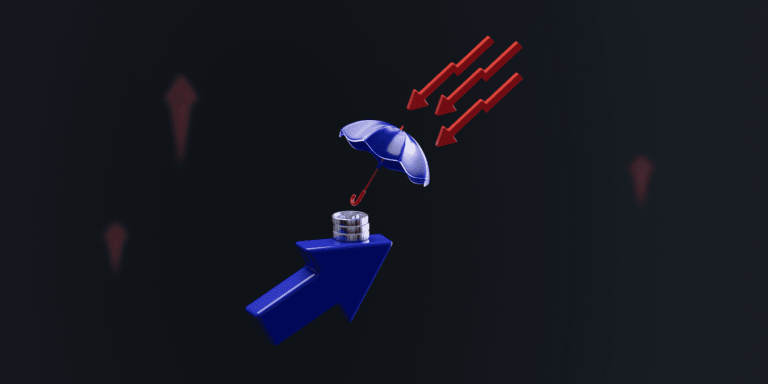
Ví dụ về việc sử dụng lệnh Điền hoặc Giết
Là một nhà giao dịch chuyên nghiệp, bạn thường xuyên tìm kiếm các điểm vào lệnh thích hợp cho các vị thế đáng kể trên nhiều cổ phiếu thanh khoản khác nhau. Một buổi sáng, thuật toán của bạn đánh dấu một động thái tăng giá tiềm năng đang hình thành trong công ty công nghệ MegaTech, Inc. dựa trên các tín hiệu dòng lệnh mạnh lên và nguồn cung giảm dần trên ngưỡng hỗ trợ quan trọng 50 đô la một cổ phiếu.
Với vị thế 100.000 cổ phiếu lớn mà chiến lược của bạn yêu cầu và tốc độ phản ứng dự kiến của thị trường, bạn chọn đặt lệnh giới hạn FOK ngay lập tức để đảm bảo hoàn toàn vị thế của mình khi kiểm tra mức giá 50 đô la. Khi đến nền tảng môi giới, bạn đặt lệnh "GTD FOK MUA 100.000 cổ phiếu MegaTech @ 50 đô la" và lệnh sẽ được chuyển đến các sàn giao dịch thông qua kết nối có độ trễ thấp.
Thị trường không hề do dự, khi các lệnh bán được quét sạch và MegaTech bật lên 0,25 đô la trên mức kích hoạt của bạn. Tuy nhiên, thanh khoản mở tỏ ra khan hiếm trên mức hỗ trợ và chỉ có thể đáp ứng 80.000 cổ phiếu trong lệnh của bạn tại thời điểm này. Lúc này, bản chất không khoan nhượng của điều kiện FOK được thể hiện rõ ràng - không thể đáp ứng hoàn toàn tiêu chí 100.000 cổ phiếu trong lần kiểm tra ban đầu, toàn bộ lệnh của bạn sẽ bị hủy ngay lập tức mà không được thực hiện một phần.
Nếu bạn chọn IOC thay vì IOC, 80.000 cổ phiếu sẽ được thu hoạch và phần còn lại sẽ bị vô hiệu hóa. Việc nắm giữ một phần cổ phiếu sẽ khiến bạn không đạt được quy mô mong muốn. Bằng cách yêu cầu thực hiện nghiêm ngặt, ngay lập tức hoặc toàn bộ, FOK bảo vệ chiến lược của bạn khỏi việc ảnh hưởng đến quy mô vị thế dự kiến do các khớp lệnh ban đầu không hoàn chỉnh trong thị trường biến động mạnh. Trong các trường hợp tận dụng quy mô lớn, mức độ chắc chắn thực hiện này tỏ ra vô cùng quý giá.
Khi nào tôi nên sử dụng lệnh Fill hoặc Kill?
Trong một số điều kiện thị trường nhất định, việc sử dụng lệnh FOK (Fill-or-kill) có thể mang lại lợi ích rõ ràng so với các loại lệnh khác. Dưới đây là một số trường hợp mà FOK có thể đặc biệt phù hợp:
- Giải quyết ngay lập tức: Khi tốc độ thực hiện là yếu tố quan trọng nhất, FOK đảm bảo lệnh được đóng ngay lập tức sau khi gửi, thông qua việc thực hiện hoặc hủy bỏ. Điều này mang lại sự chắc chắn nhanh chóng so với các lệnh khác có thể bị bỏ trống.
- Định cỡ vị trí chính xác: Đối với các giao dịch yêu cầu số lượng cổ phiếu hoặc hợp đồng chính xác, FOK đảm bảo khối lượng giao dịch được chỉ định sẽ được thực hiện hoặc không được thực hiện. Điều này tránh tình trạng khớp lệnh không đầy đủ có thể làm gián đoạn quy mô giao dịch dự kiến.
- Thị trường phát triển nhanh: Trong các danh sách dễ biến động giá nhanh, việc thanh toán tức thời của FOK giúp ngăn ngừa rủi ro di chuyển khỏi các điều khoản của lệnh trước khi hoàn tất. Việc lấp đầy một phần sẽ khiến phần còn lại gặp rủi ro.
- Chiến lược phức tạp: Các hệ thống giao dịch đòi hỏi thông tin đầu vào chính xác có thể ưu tiên sự rõ ràng của lệnh FOK đã được khớp hoặc hủy hơn là sự mơ hồ của lệnh đã được khớp một phần. Điều này giúp theo dõi quy trình rõ ràng hơn.
- Ưu tiên đóng cửa: Một số kỹ thuật như giao dịch trong ngày tập trung vào tốc độ chốt lệnh hơn là tối đa hóa tỷ lệ khớp lệnh của mỗi giao dịch. FOK hoàn toàn phù hợp với mục tiêu này.
- Tránh sự không chắc chắn:Thay vì chịu đựng sự không chắc chắn của các lệnh chưa hoàn thành, FOK sẽ giải quyết lệnh ngay lập tức, loại trừ rủi ro treo lệnh và thay đổi vị thế.
Khi điều kiện đòi hỏi kết quả được xác định rõ ràng, hạn chế rủi ro thông qua việc lấp đầy tức thời hoặc hủy bỏ nhanh chóng, logic lấp đầy hoặc hủy bỏ có thể hợp lý hóa hoạt động giao dịch một cách hiệu quả. Mục đích rõ ràng của nó phù hợp với các thông lệ tốt nhất cụ thể.
Cách đặt lệnh Fill hoặc Kill
Việc nhập lệnh FOK rất đơn giản khi bạn đã hiểu các thông số chính và quy trình đặt lệnh với nhà môi giới. Hãy cùng phân tích các bước cơ bản:
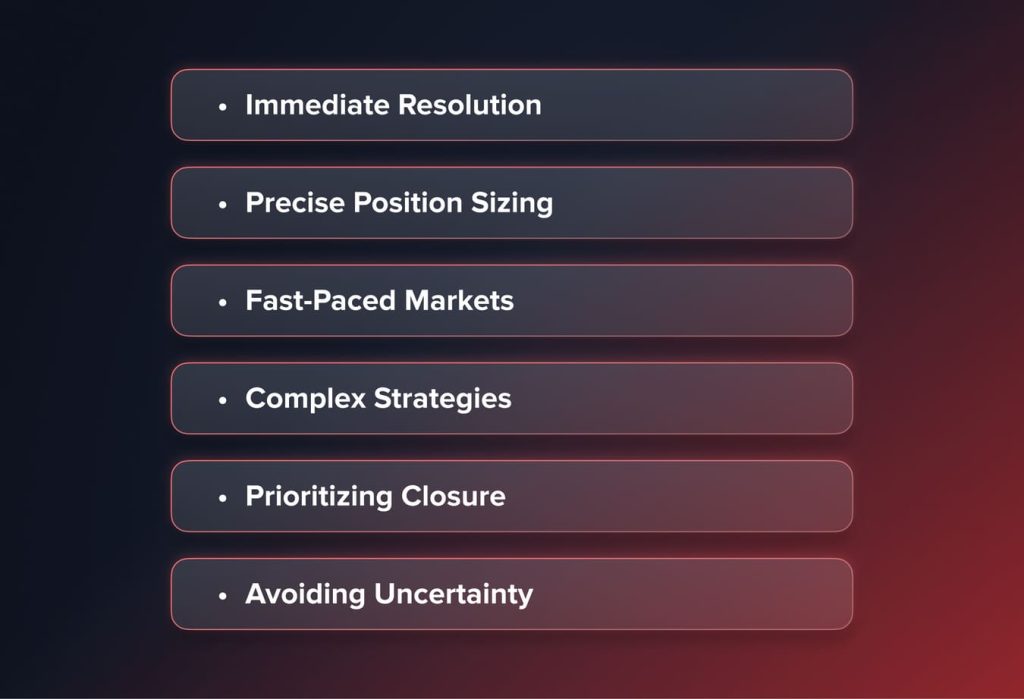
1. Lựa chọn nhà môi giới
Trước khi bắt đầu, hãy đánh giá xem nhà môi giới nào đáp ứng thị trường và loại lệnh bạn ưa thích. Nền tảng máy tính để bàn, web và thiết bị di động có thể giúp việc nhập lệnh trở nên đơn giản hơn.
2. Khởi tạo Phiếu Giao dịch
Đăng nhập vào giao diện giao dịch của nhà môi giới bạn đã chọn thông qua trang web hoặc ứng dụng chuyên dụng. Tìm tùy chọn "Lệnh mới" và chọn sàn giao dịch mong muốn.
3. Điền thông tin chi tiết về giao dịch
Điền vào các trường như ký hiệu, bên (Mua/Bán), số lượng lệnh, loại giá (Giới hạn), giá giới hạn và loại lệnh (Thực hiện hoặc Hủy). Xem xét kỹ từng yếu tố.
4. Lựa chọn loại lệnh
Trên menu tương tác hoặc danh sách thả xuống, hãy chọn "Fill or Kill" hoặc từ ngữ tương tự để chỉ rõ ý định thực hiện hoặc hủy bỏ ngay lập tức.
5. Xem lại các tham số đơn hàng
Kiểm tra lại tất cả các chi tiết xem có khớp với kế hoạch giao dịch dự kiến của bạn không, bao gồm cả hành vi có điều kiện, trước khi xác nhận. Chỉnh sửa nếu cần.
6. Nộp để có hiệu lực
Gửi đơn hàng đến các trung tâm thị trường được chỉ định bằng cách nhấp vào nút có ghi rõ "Xác nhận" hoặc tương tự. Xác minh thông tin gửi.
7. Hiểu về rủi ro thời gian
Hãy nhớ rằng việc trao đổi có thể xóa bỏ các lệnh FOK chưa được thực hiện chỉ trong vài giây, vì vậy chỉ sử dụng tài sản thanh khoản trừ khi bạn cảm thấy thoải mái với rủi ro.
8. Phương pháp thực hiện thay thế
Một số nhà môi giới cho phép bạn gọi lệnh FOK qua điện thoại nếu muốn thay vì đặt lệnh trực tuyến. Hãy đảm bảo nhân viên đại diện hiểu rõ logic điều kiện.
Bằng cách tìm hiểu những điểm đặc biệt của quy trình sắp xếp với người trung gian bạn chọn, bạn có thể khai thác một cách chiến lược sự rõ ràng và kết quả sắc nét nhờ chức năng "điền hoặc hủy" để đạt được kết quả tối ưu. Đừng ngần ngại xác nhận sự hiểu biết đầy đủ.
Phần kết luận
Trong thị trường kỹ thuật số tốc độ cao ngày nay, các lệnh có điều kiện như FOK cung cấp cho các nhà giao dịch lão luyện những công cụ mạnh mẽ để xác định chính xác các giao dịch ở cấp độ chi tiết. Bằng cách hiểu rõ cơ chế hoạt động và cách sử dụng phù hợp, bạn có thể dễ dàng tận dụng các cơ hội khi chúng xuất hiện trên nhiều khung thời gian.
Khi được sử dụng một cách chiến lược, lệnh khớp hoặc hủy đảm bảo bạn có thể đảm bảo vị thế mong muốn ngay lập tức dựa trên các bộ lọc được thiết lập sẵn, hoặc rút lui an toàn khỏi các giao dịch tiềm năng không thể thực hiện ngay lập tức. Đối với các kịch bản giao dịch ưu tiên sự rõ ràng tuyệt đối và tuân thủ nghiêm ngặt các tiêu chí về khối lượng hoặc giá, logic FOK là một lựa chọn chiến thuật có giá trị.
Đã cập nhật:
19 tháng 12, 2024